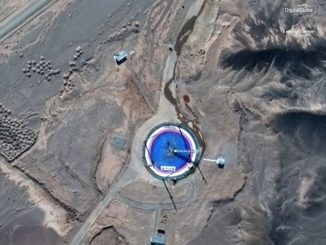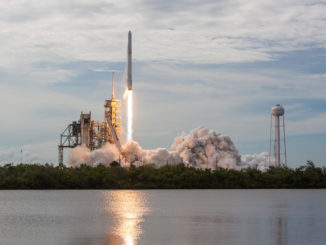
NASA has a plan to retrieve 12 ejectable data recorders released from an Orion test capsule in the waters off Cape Canaveral following a launch abort test Tuesday, but local boaters and beachgoers could still find the floating orange devices.
If that happens, NASA wants the recorders back.
The data recorders will register information from early 900 temperature, pressure and acoustic sensors during a three-minute flight of an Orion test capsule Tuesday over Cape Canaveral. The test flight is designed to demonstrate the function of the Orion capsule’s abort system, which would be used to quickly whisk astronauts away from a catastrophic launch failure.
NASA considers the demonstration a critical step before putting astronauts on the spacecraft for missions to the moon.
The Orion test capsule to be flown Tuesday is a simplified, cheaper version fo the spacecraft that astronauts will fly. It’s the same shape and weight of the space-worthy Orion spacecraft, and the test capsule is mounted on top of a modified Peacekeeper missile at Space Launch Complex 46, located near the easternmost point of Cape Canaveral Air Force Station.
The four-hour launch window opens at 7 a.m. EDT (1100 GMT) Tuesday.
Less than a minute after liftoff, an abort rocket on top of the 93-foot-tall (28-meter) vehicle will ignite to quickly pull the test capsule away from the Peacekeeper test booster at an altitude of 31,000 feet (about 9,500 meters). The abort system also has a rocket to control its attitude, or orientation, during the critical abort maneuver.
Around 27 seconds later, a different rocket motor will ignite to separate the abort system from the test capsule. All three major components — the booster, capsule and abort system — will fall into the Atlantic Ocean around 7 miles (11 kilometers) east of Cape Canaveral, where they will impact the sea and sink.
The capsule will transmit data collected during the three-minute test back to receiving stations on the ground before hitting the ocean. Engineers want the information to validate the design of the abort system, and ensure it is ready to save astronauts from a failure during the Orion spacecraft’s ascent into orbit on NASA’s Space Launch System, the huge rocket in development to loft the capsule and its crew toward the moon.

In case there are problems with the real-time telemetry stream, NASA added 12 data recorders to the test capsule. The devices will be jettisoned from the vehicle during its descent into the ocean.
“We have two separate pods, they’re actually military flare dispensers, and they had six recorders in each one, and we eject them in pairs every 10 seconds,” said Don Reed, launch director for the AA-2 mission, in an interview with Spaceflight Now. “So 20 seconds after the LAS (launch abort system) jettisons from the crew module, we start ejecting, so the first pair comes out 20 seconds after the LAS is jettisoned, and then every 10 seconds until all 12 are ejected.”
The recorders are designed to survive the impact with the ocean, and they carry automatically-activating locator beacons to help recovery teams on boats find them.
Each device will record the same data, so finding just one recorder will provide a full backup to the in-flight telemetry data stream.
NASA recovered all of the devices during a rehearsal last year, Reed said.
The recorders are bright orange, and are about the length and width of a large candy bar, although somewhat thicker.
“They float, and they do have a label on them,” said Jenny Devolites, NASA’s test conductor for the abort demonstration. “They also actually have a beacon and a transmitter, so that we can locate them.”
The labels say the the recorders are “property of NASA,” and they have a phone number and email address for the public to contact the agency for officials to come and pick up them up.
“We did practice, so we proved we can find them and recover them, but if you see anything like this tomorrow, let us know,” said Mark Kirasich, NASA’s Orion program manager.
Email the author.
Follow Stephen Clark on Twitter: @StephenClark1.



